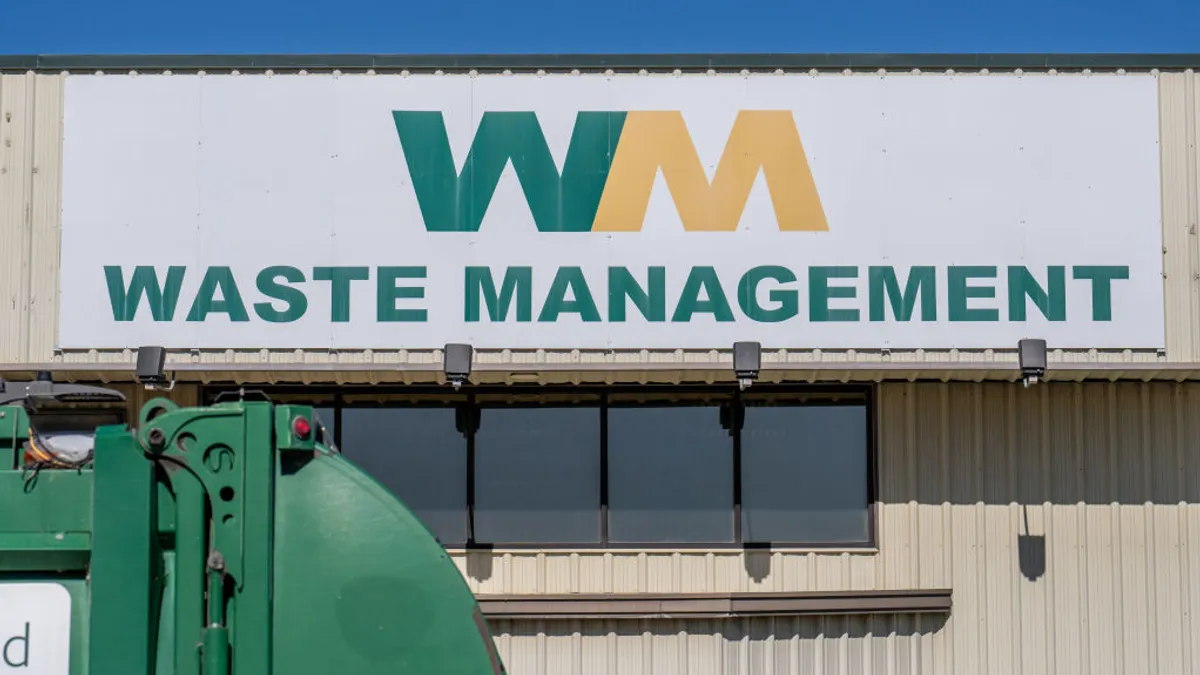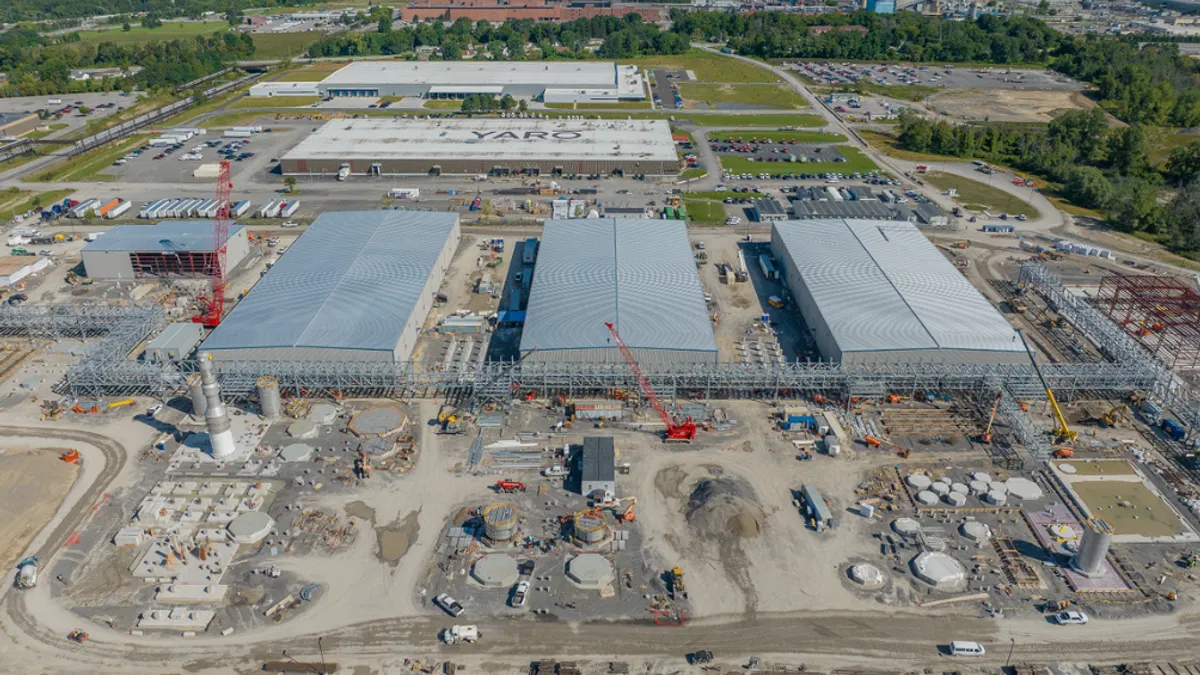This story is part of a series on trends shaping the U.S. waste and recycling industry in 2022.
All aspects of labor — including how to best hire and retain workers, balance costs, and plan for the evolution of low-skill tasks by adopting new tech — will continue to be top of mind in waste collection this year, according to industry observers and stakeholders.
A spike in COVID-19 cases at the start of 2022 emphasized the tenuous labor situation, which goes beyond the industry. The number of open U.S. jobs reached recent heights in the latter half of 2021, exceeding 11 million at times. Sanitation agencies and companies are vying for workers in an economy altered by the pandemic, while planning for automation to address aspects of waste collection that are forever changed.
Direct labor costs, plus third-party costs like maintenance work, are the single greatest input cost for these employers, noted Noah Kaye, a senior research analyst at Oppenheimer & Co. "Perpetual shortages" of workers have plagued the industry for years, Kaye said. But this past year the rate of inflation accelerated. "We would expect going into 2022 that labor inflation will remain elevated, and the key dynamic that investors are monitoring is the extent to which price can offset those inflationary costs," he said.
In Kaye's view, employers' key levers in dealing with labor inflation are to provide wages, benefits and flexibility that inspire better worker retention, and to invest in automation in fleets and at facilities. Stakeholders on both the employee and employer sides echoed those sentiments.
New year, persistent pipeline and pay issues
On the West Coast, for instance, the year began with the continuation of a month-long collection worker strike in the San Diego area against employer Republic Services, which ultimately extended to the Seattle area before reaching a resolution on Jan. 17.
In that strike, one of the key concerns was inflation-adjusted wages, according to Chuck Stiles, director of the Solid Waste and Recycling Division of the Teamsters union. Nationally, Teamsters is under the new leadership of President Sean O'Brien as of November. O'Brien previously led the Boston area Teamsters Union Local 25, which was behind a multi-month strike against Republic Services in Massachusetts in 2019.
“We have a new administration taking over in D.C. It'll be a much more militant movement going forward,” Stiles said. “I think we have to be militant in these days and times. These workers deserve more.”
Broadly speaking, good healthcare coverage is another top concern for the union – a priority only heightened by the pandemic’s perils. Teamsters is also seeking to have Martin Luther King Jr. Day as a paid holiday in all contracts going forward, Stiles said. King's birthday has particular significance to the solid waste industry because King was in Memphis, Tennessee, for a sanitation workers strike when he was killed in 1968.
But benefits aside, pay remains paramount.
Mark Mutton is CEO of Inflection Poynt, an Illinois-based recruiting firm that works with the waste and recycling industry, along with trucking and armored delivery. It lists WM, Republic Services, LRS and Rumpke Waste & Recycling among its clients, and Mutton believes his firm has helped place more than 1,000 waste and recycling workers since he founded the company in 2018.
“Number one is wages,” said Mutton of the top influences employers can have on candidates, even if companies sometimes like to think otherwise. Conversely, Mutton warned against one trend that multiple companies and cities have used amid worker shortages: offering signing bonuses. Bad idea, he said, because they are very short-term incentives and have a negative impact on the morale of existing employees.
The second-most important factor in attracting candidates, Mutton believes, is meaning behind the job. "The drivers and mechanics need to understand that they have a greater purpose than a paycheck," Mutton said, given the essential nature of their work. Accordingly, waste is a relatively recession-proof industry, "so that's a major selling point as well," particularly coming off pandemic-driven layoffs in many different industries.
Likewise, Kaye highlighted the possibility for waste workers to have more flexible scheduling arrangements such as a four-day work week. Kirk Sander, vice president of safety and standards at the National Waste & Recycling Association (NWRA), noted the appeal of being able to go home at night, unlike the lifestyle of some over-the-road truckers.
The industry continues to compete with driver-dependent e-commerce or delivery companies like Amazon or UPS. Mutton said his firm is just starting to see some employers stand up their own in-house driver training programs to make training more accessible to potential candidates who don't live in close proximity to trucking schools. Mutton said there's also an emerging trend of employers cutting previous requirements that candidates have a commercial driver license and driving experience, in favor of taking candidates who are eager to learn and obtain a CDL.
The NWRA pointed to two main national initiatives it has been engaged on that could potentially expand worker pipelines. The first is a 90-day sprint to gauge interest on developing apprenticeship programs through the Biden administration’s Trucking Action Plan announced in December. Sander said NWRA is working with the Employment and Training Administration at the U.S. Department of Labor to determine how to tap into these opportunities to get more drivers. Secondly, NWRA is following implications of new entry-level driver requirements from the Federal Motor Carrier Safety Administration.
Ongoing tech developments
The costs and challenges with labor are giving way to further momentum on automation. That transition will continue to happen gradually, Sander believes.
During WM's early February earnings call, the company said it's aiming to eliminate between 5,000 and 7,000 jobs through attrition in the next four years as it invests more in automation, including in MRFs and collection. The coming years could see at least 3,000 more rear-load trucks replaced by automated side-loaders.
According to a 10-year industry trends outlook for 2022 from investment firm Stifel, analysts believe that a "digital connection to all stakeholders has become table stakes," and new tech and AI developments will replace low-skill, repetitive tasks and help "deal with labor pool constraints."
At the same time, the fuel powering the trucks themselves is changing too. Stifel estimates about 30% of solid waste fleets have converted to compressed natural gas (CNG), with electric being the next horizon for conversion.
Energy Vision, an alternative fuels-focused nonprofit research institute, released its "The Refuse Revolution" report in December covering a wide range of vehicle types being made available to refuse fleets beyond CNG and battery electric. The list includes hybrid electric or hydraulic hybrid vehicles, fossil natural gas, renewable natural gas made from organic wastes, hydrogen, and dimethyl ether.
As has been the case in recent years, experts believe the uptake of battery electric options will continue to be a slow burn; 2022 doesn't necessarily mark a tipping point. Former New York City sanitation commissioner Brendan Sexton wrote in a foreword to the report that while battery electric truck pilots are exciting, "they do not yet have the operational track record of success necessary for widespread adoption" in addition to coming with a cost premium.
The U.S.-focused report goes on to estimate that there are fewer than 50 fully electric refuse trucks on the road, and their cost is close to $500,000 versus diesel's $300,000. "The small sample size and limited publicly available data leave questions about the power, torque, and reliability of this technology for the refuse sector," the report states.
Oppenheimer’s Kaye also called out production constraints for electric vehicles broadly, and noted that EV makers aren’t prioritizing refuse trucks in such an environment. "The most likely outcome for this year is that we see ongoing healthy adoption of CNG with piloting on the EV side," with inflection points in the latter technology's adoption curve still one to two years out.



















